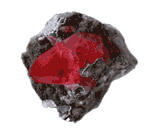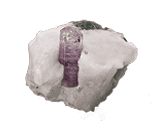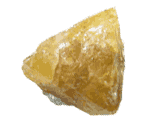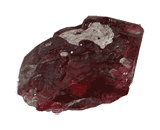| Gemstone Chart |
 Natural Rhodochrosite Natural Rhodochrosite
Rhodochrosite is a manganese carbonate mineral with chemical composition MnCO3. The pink color of rhodochrosite is caused by the element manganese and it is formed when manganese is dissolved by ground water and combines with a carbonate material and then drips off the ceiling of caves and crevices deep underground.Rhodochrosite often forms pink and white bands. It is often carved into figurines or boxes while the tubular stalactite formations are often sliced for use in jewelry. Fine gem quality crystals are sometimes cut into gemstones for use in high end jewelry, but the more common grade is used extensively in silver and gold jewelry.
Color: Rose red, raspberry red, pink, grey, fawn, brown
Categories: semi-precious stone
Chemical Composition: MnCO3
Crystal Group: Trigonal
Refractive Index: 1.600 ĘC 1.820
Hardness: 4
Density: 3.45 ĘC 3.70
Occurrence: Argentina; Colorado, U.S.A.; Romania; Hungary; India; South Africa; Saxony, Chile; Peru; Mexico.
|  Natural Scapolite Natural Scapolite
Scapolite is actually the name of a series between the sodium chloride rich mineral called marialite and the calcium carbonate rich mineral meionite.Scapolite was originally discovered in 1913 in the Mogok Stone Tract in upper Burma (Myanmar). Scapolite is a rare and little known gemstone. It is a beautiful gem that comes in many colors.
Color: white, yellow, violet,pink
Categories: semi-precious stone
Chemical Composition: Na4Al3Si9O24Cl /CA4Al6Si6O24CO3
Crystal Group: Tetragonal
Refractive Index: 1.54 - 1.577
Hardness: 6
Density: 2.6-2.71
Occurrence: Kenya, Mozambique, Madagascar, Burma, Brazil, Canada.
|  Natural Scheelite Natural Scheelite
Scheelite is a calcium tungstate mineral with the chemical formula CaWO4.With a hardness of 4.5 to 5 on the Moh's ScaleScheelite is a rather soft stone. Traditionally, it was considered a collector's gem and unsuitable for use in jewelry.
Color: Yellowish-white, brownish, orange yellow
Categories: semi-precious stone
Chemical Composition: CaWO4
Crystal Group: Tetragonal
Refractive Index: 1.918 - 1.937
Hardness: 4.5 - 5.0
Density: 5.9 - 6.1
Occurrence: Czechoslovakia; Italy; Switzerland; Finland; Cumberland, Cornwall, England; Santa Cruz, Sonora, Mexico; South Dakota, Conneticut, Colorado, Utah, California, Arizona, USA; New South Wales and Queensland, Australia; Mian Yang, and Ping Wu, Sezhuan, China; Hollinger Mine, Ontario, Canada;
|  Natural Spinel Natural Spinel
Spinel is the magnesium aluminium member of the larger spinel group of minerals. It has the formula MgAl2O4.Pure spinel is white, but impurities give it a wide range of colors.Almost all colors are used in jewelry, but the most valuable and popular color is the deep red. Spinel is cut into gems for use as jewelry. The deep-red variety, known as ruby spinel, is the most prized form.
Color: orange, pink, black, blue, lavender, mauve, greenish blue, and vivid red
Categories: semi-precious stone
Chemical Composition: MgAl2O4
Crystal Group: Cubic
Refractive Index: 1.718 (-.006,+.044)
Hardness: 8
Density: 3.60 (-.03, +.30)
Occurrence: Mogok, Burma; Sri Lanka; Amboseli district, Kenya; Jemaa district, Nigeria; Matombo, Umba, and Tunduru Tanzania; Hunza, Pakistan; Pamir range, Tajikstan; Luc Yen, Vietnam; Madagascar; Australia; Sweden; Brazil.
|  Natural Zircon Natural Zircon
Zircon is a mineral belonging to the group of nesosilicates. It is one of the heaviest gemstones, which means that it will look smaller than other varieties of the same weight. Zircon occurs in a wide range of colours,the most popular colour is blue zircon. The wide variety of colours of zircon, its rarity, and its relatively low cost make it a popular collector's stone.
Color: Brown, blue, red, orange, white, green
Categories: semi-precious stone
Chemical Composition: ZrSiO4
Crystal Group: Tetragonal
Refractive Index: 1.780-1.984
Hardness: 7.5
Density: 4.00-4.73
Occurrence: Ceylon, Burma,France, Norway, East Africa,Australia, SE Asia.
|
|
